The political systems of Imperial China can be divided into a state administrative body, provincial administrations, and a system for official selection. The three notable tendencies in the history of Chinese politics includes, the convergence of unity, the capital priority of
absolute monarchy
Absolute monarchy (or Absolutism as a doctrine) is a form of monarchy in which the monarch rules in their own right or power. In an absolute monarchy, the king or queen is by no means limited and has absolute power, though a limited constituti ...
, and the standardization of official selection. Moreover, there were early supervisory systems that were originated by local factions, as well as other political systems worthy of mention.
Fundamental System: Autocratic Monarchy

Principles and Foundation
During the
Warring States period
The Warring States period () was an era in History of China#Ancient China, ancient Chinese history characterized by warfare, as well as bureaucratic and military reforms and consolidation. It followed the Spring and Autumn period and concluded ...
, the ancient Chinese text
Han Feizi
The ''Han Feizi'' or ''Hanfeizi'' (" ritings ofMaster Han Fei") is an ancient Chinese text named for its attribution to the political philosopher Han Fei. It comprises a selection of essays in the Legalist tradition on theories of state power, ...
proposed the establishment of the first all-encompassing autocratic monarchy for the future of the state. During the same time period,
Shang Yang
Shang Yang (; c. 390 – 338 BC), also known as Wei Yang () and originally surnamed Gongsun, was a Chinese jurist, philosopher, and politician.Antonio S. Cua (ed.), 2003, p. 362, ''Encyclopedia of Chinese Philosophy'"The fifth important legali ...
from the state of
Qin would enact political reforms into practice. The imperial system would eventually be constituted by the time of the establishment of the
Qin, which would introduce the system of Three Lords and Nine Ministers, which would also foster the system of prefectures and counties. Units of measurements, currency, and writing would be standardized and books and scholars of the previous regime were burned and buried; vital to ideological integrity. Officials were then to act as faculties of the law from this point forward.
Consolidation and reinforcement
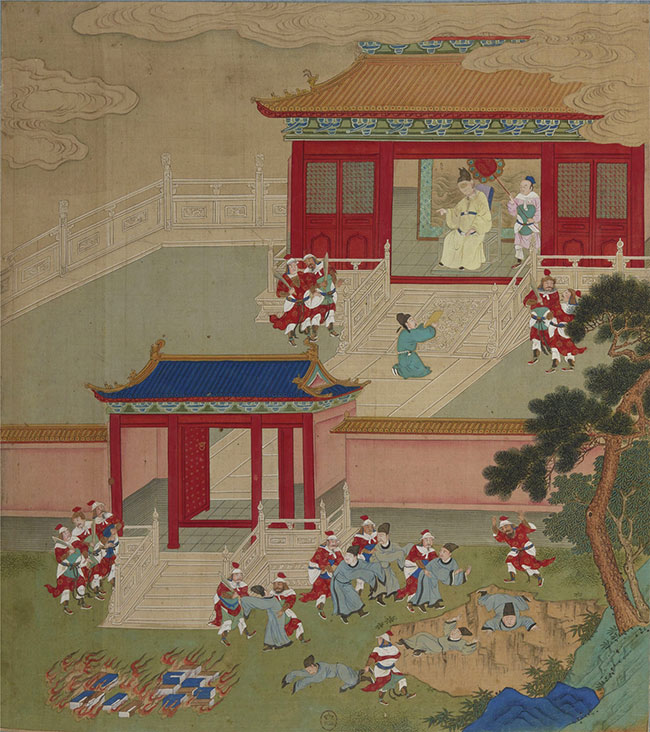
In resolute action to settle domestic concerns,
Western Han
The Han dynasty (, ; ) was an imperial dynasty of China (202 BC – 9 AD, 25–220 AD), established by Liu Bang (Emperor Gao) and ruled by the House of Liu. The dynasty was preceded by the short-lived Qin dynasty (221–207 BC) and a war ...
conducted conclusive capital punishments, issued the Decree of Mercy and the Law of Supplementary Benefits, denounced the Hundred Schools of Thought, and only extolled
Confucianism
Confucianism, also known as Ruism or Ru classicism, is a system of thought and behavior originating in ancient China. Variously described as tradition, a philosophy, a Religious Confucianism, religion, a humanistic or rationalistic religion, ...
. By instituting the system of three provinces and six ministries, the feudal bureaucracy completed and achieved a rigorous system that diminished the prime minister's power and reinforced imperial power. Complementary to this governing body, establishment and improvement of the Imperial Civil Examination enhanced the availability of invigorated government officials which in turn provided a recurrent administration. Regulation of military power requisitioned the removal of total military authority from senior generals and local commanders. This, in turn, permitted sanctioning of three government officials to command the imperial army of which were mediated internally via privy council. Within the framework of organized executive power; the administration, the military, the financial powers of the chief ministers, the privy Councillors, and the three Secretaries partitioned and absorbed the authorities of the prime minister, respectively. Regulation of financial power was acquired by arranging consignments on appropriate levels of operations to coordinate local finances. Finally, standardization of judicial powers was executed via dispatching of civil officials to serve as local judiciaries. These means and measures concentrated the sovereignty of the head of state; surmounting military, administrative, financial, and judicial authority from all levels of governance, this subsequently vanquished the foundation of feudal-vassal separation..
Further development and final shape
In the central government, the executive system of central officials was improved during
Yuan dynasty. It established the
Xuanzheng Yuan (the Bureau of Buddhist and Tibetan Affairs) to direct religious affairs and to govern the region of
Tibet
Tibet (; ''Böd''; ) is a region in East Asia, covering much of the Tibetan Plateau and spanning about . It is the traditional homeland of the Tibetan people. Also resident on the plateau are some other ethnic groups such as Monpa people, ...
. At the local level, the provincial system was practiced. At the beginning of the
Ming
The Ming dynasty (), officially the Great Ming, was an imperial dynasty of China, ruling from 1368 to 1644 following the collapse of the Mongol-led Yuan dynasty. The Ming dynasty was the last orthodox dynasty of China ruled by the Han pe ...
dynasty, the prime minister was abolished, and the power was divided into six departments. The local government implemented the division of power among the three functioning departments. The
Qing
The Qing dynasty ( ), officially the Great Qing,, was a Manchu-led imperial dynasty of China and the last orthodox dynasty in Chinese history. It emerged from the Later Jin dynasty founded by the Jianzhou Jurchens, a Tungusic-speak ...
dynasty followed the system of the Ming dynasty, set up more military offices, put up literary prisons, thus strengthened the centralisation of authoritarianism.
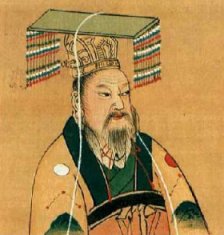
Central political systems
Three Lords and Nine Ministers system
The three lords and nine ministers system was a central administrative system adopted in ancient China that was officially instituted in
Qin dynasty and later developed in
Han dynasty.
Three Lords
The Three Ducal Ministers (), also translated as the Three Dukes, Three Excellencies, or the Three Lords, was the collective name for the three highest officials in Ancient China and Imperial China. These posts were abolished by Cao Cao in 208 AD ...
referred to three highest rank officials in the imperial government, namely:
* the
Chancellor
Chancellor ( la, cancellarius) is a title of various official positions in the governments of many nations. The original chancellors were the of Roman courts of justice—ushers, who sat at the or lattice work screens of a basilica or law cou ...
* the Imperial Secretary
* the Grand Commandant
Nine Ministers The Nine Ministers or Nine Chamberlains () was the collective name for nine high officials in the imperial government of the Han dynasty (206 BC–220 AD), who each headed one of the Nine Courts and were subordinates to the Three Councillors of ...
comprised all the ministers of importance in the central government. They were:
* the Minister of Ceremonies
* the Supervisor of Attendants
* the Commandant of Guards
* the Minister of Coachmen
* the Commandant of Justice
* the Grand Herald
* the Director of the Imperial Clan
* the Grand Minister of Agriculture
* the Small Treasurer
Three departments and six ministries system
The three lords and nine ministers system was replaced by the system of three provinces and six ministries by
Emperor Wen of the
Sui dynasty. The three departments were
Shangshu,
Zhongshu and
Menxia. The central committee was responsible for drafting and issuing imperial edicts; Subordinate provinces shall be responsible for the examination and verification of administrative decrees; Shangshu was responsible for carrying out important state decrees, and the heads of the three provinces were all prime ministers. The six ministries were officials, households, rites, soldiers, punishments, and workers. The three provinces and six ministries had both divisions of labor and cooperation, and they supervised and contained each other, thus forming a strict and complete system of the feudal bureaucracy, effectively improving administrative efficiency and strengthening the ruling power of the central government. The separation of the three powers weakens the power of the prime minister and strengthens the imperial power. The officially adopted systems of
Song
A song is a musical composition intended to be performed by the human voice. This is often done at distinct and fixed pitches (melodies) using patterns of sound and silence. Songs contain various forms, such as those including the repetiti ...
,
Yuan,
Ming
The Ming dynasty (), officially the Great Ming, was an imperial dynasty of China, ruling from 1368 to 1644 following the collapse of the Mongol-led Yuan dynasty. The Ming dynasty was the last orthodox dynasty of China ruled by the Han pe ...
, and
Qing
The Qing dynasty ( ), officially the Great Qing,, was a Manchu-led imperial dynasty of China and the last orthodox dynasty in Chinese history. It emerged from the Later Jin dynasty founded by the Jianzhou Jurchens, a Tungusic-speak ...
dynasties all changed a little on this basis.
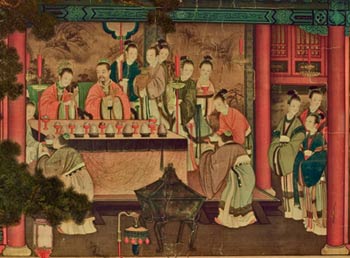

Prime minister system
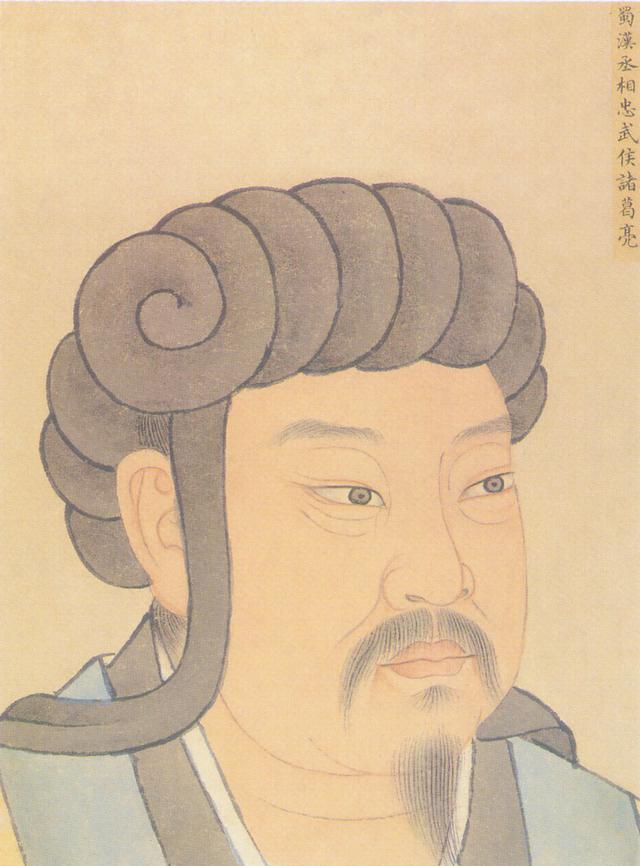 Qin
Qin established the system of three lords and nine ministers in the central government.
Emperor Wu of the
Western Han
The Han dynasty (, ; ) was an imperial dynasty of China (202 BC – 9 AD, 25–220 AD), established by Liu Bang (Emperor Gao) and ruled by the House of Liu. The dynasty was preceded by the short-lived Qin dynasty (221–207 BC) and a war ...
dynasty reformed the official system implemented the internal and external dynasties system and weakened the power of the prime minister.
Emperor Guangwu
Emperor Guangwu of Han (; 15 January 5 BC – 29 March AD 57), born Liu Xiu (), courtesy name Wenshu (), was a Chinese monarch. He served as an emperor of the Han dynasty by restoring the dynasty in AD 25, thus founding the Eastern Han (Later ...
of the
Eastern Han
The Han dynasty (, ; ) was an imperial dynasty of China (202 BC – 9 AD, 25–220 AD), established by Liu Bang (Emperor Gao) and ruled by the House of Liu. The dynasty was preceded by the short-lived Qin dynasty (221–207 BC) and a warr ...
dynasty expanded the power of the Shangshu department.
Sui and
Tang
Tang or TANG most often refers to:
* Tang dynasty
* Tang (drink mix)
Tang or TANG may also refer to:
Chinese states and dynasties
* Jin (Chinese state) (11th century – 376 BC), a state during the Spring and Autumn period, called Tang (唐) ...
dynasties established the system of three provinces and six departments, dividing the power of the prime minister into three and containing each other, which reflected the strengthening of the imperial power. In the northern song dynasty, under the chancellors, the chief ministers were appointed as deputy ministers to divide the administrative power of the chancellors. There were privy secretaries to divide the military power and three divisions to divide the financial power. The
Yuan dynasty set up a Zhongshu province, with prime ministers on the right and left, exercising the functions and powers of prime ministers. The
Ming
The Ming dynasty (), officially the Great Ming, was an imperial dynasty of China, ruling from 1368 to 1644 following the collapse of the Mongol-led Yuan dynasty. The Ming dynasty was the last orthodox dynasty of China ruled by the Han pe ...
dynasty abolished the prime minister and divided the power into six parts. Emperor
Yongle
Yongle () (23 January 1403 – 19 January 1425) was the era name of the Yongle Emperor, the third emperor of the Ming dynasty of China.
Comparison table
Other eras contemporaneous with Yongle
* Vietnam
** ''Thiệu Thành'' (紹成, 1401– ...
set up a cabinet and implemented "draft vote." The military offices were set up in the
Qing
The Qing dynasty ( ), officially the Great Qing,, was a Manchu-led imperial dynasty of China and the last orthodox dynasty in Chinese history. It emerged from the Later Jin dynasty founded by the Jianzhou Jurchens, a Tungusic-speak ...
dynasty, and the remnants of the prime minister system disappeared, reflecting that the imperial power had reached its peak. From the changes, we can see that the emperor divided and weakened the power of the prime minister, gradually concentrated all kinds of power in his own hands, and thus effectively implemented the autocratic monarchy. Notable prime ministers include Prime Minister Zhu of Shu, Prime Minister Xiao of Western Han and Prime Minister Wang of Song.

Local political systems
Enfeoffment system
To consolidate the power of slave owners, the rulers of the
Western Zhou
The Western Zhou ( zh, c=, p=Xīzhōu; c. 1045 BC – 771 BC) was a royal dynasty of China and the first half of the Zhou dynasty. It began when King Wu of Zhou overthrew the Shang dynasty at the Battle of Muye and ended when the Quanrong n ...
dynasty implemented the system of enfeoff vassals politically, which enabled the
Zhou dynasty to consolidate its rule and expand its territory.
In the spring and autumn period, it gradually collapsed and was replaced by the system of prefectures and counties, which remained in some later dynasties.
Prefecture and county system
During the
Spring and Autumn period
The Spring and Autumn period was a period in Chinese history from approximately 770 to 476 BC (or according to some authorities until 403 BC) which corresponds roughly to the first half of the Eastern Zhou period. The period's name derives fr ...
and the
Warring States period
The Warring States period () was an era in History of China#Ancient China, ancient Chinese history characterized by warfare, as well as bureaucratic and military reforms and consolidation. It followed the Spring and Autumn period and concluded ...
, the
Qin dynasty was carried out nationwide, thus replacing the feudal system nationwide, greatly weakening the independence of local authorities and strengthening the centralization of power. This was an epoch-making reform in China's local administrative system. The prefecture and county system was used for a long time in ancient China, with a very far-reaching influence.
Province system
At the beginning of the
Western Han
The Han dynasty (, ; ) was an imperial dynasty of China (202 BC – 9 AD, 25–220 AD), established by Liu Bang (Emperor Gao) and ruled by the House of Liu. The dynasty was preceded by the short-lived Qin dynasty (221–207 BC) and a war ...
dynasty, the system of prefectures and counties was implemented in local areas, and at the same time, the system of enfeoffment was established. Counties and countries were parallel to each other, which was not conducive to the unified management of the country, with the risk of division. The
Yuan dynasty was a feudal country with a vast territory at that time. Its establishment consolidated the unification of the country and ensured the centralization of power in the system. The provincial system of the Yuan dynasty had a far-reaching influence on the political system of later generations. Since then, the provincial system has become the local administrative organ of China, which was followed in the
Ming
The Ming dynasty (), officially the Great Ming, was an imperial dynasty of China, ruling from 1368 to 1644 following the collapse of the Mongol-led Yuan dynasty. The Ming dynasty was the last orthodox dynasty of China ruled by the Han pe ...
and
Qing
The Qing dynasty ( ), officially the Great Qing,, was a Manchu-led imperial dynasty of China and the last orthodox dynasty in Chinese history. It emerged from the Later Jin dynasty founded by the Jianzhou Jurchens, a Tungusic-speak ...
dynasties and has been retained until today.
Monk system
In the
Ming
The Ming dynasty (), officially the Great Ming, was an imperial dynasty of China, ruling from 1368 to 1644 following the collapse of the Mongol-led Yuan dynasty. The Ming dynasty was the last orthodox dynasty of China ruled by the Han pe ...
dynasty,
Tibet
Tibet (; ''Böd''; ) is a region in East Asia, covering much of the Tibetan Plateau and spanning about . It is the traditional homeland of the Tibetan people. Also resident on the plateau are some other ethnic groups such as Monpa people, ...
practiced the system of monks and officials. Because the
Tibetan people
The Tibetan people (; ) are an East Asian ethnic group native to Tibet. Their current population is estimated to be around 6.7 million. In addition to the majority living in Tibet Autonomous Region of China, significant numbers of Tibetans liv ...
believed in
Tibetan Buddhism
Tibetan Buddhism (also referred to as Indo-Tibetan Buddhism, Lamaism, Lamaistic Buddhism, Himalayan Buddhism, and Northern Buddhism) is the form of Buddhism practiced in Tibet and Bhutan, where it is the dominant religion. It is also in majo ...
, the Ming government used religion to rule the Tibetan people which was later called the 'monk system'.
Eight banners system


The eight banners system was in the late Ming dynasty when
Nuzhen rulers
Nurhaci
Nurhaci (14 May 1559 – 30 September 1626), also known by his temple name as the Emperor Taizu of Qing (), was a Jurchen chieftain who rose to prominence in the late 16th century in Manchuria. A member of the House of Aisin-Gioro, he reigned ...
to create a system of eight banners system according to the military organization form the Jurchen establishment, controlled by the aristocrat, with military conquering three functions, administrative management, organize production, is a soldier and unity of social organization, is a military organization and administrative management system, promote the development of the Nuzhen society. The eight banners army played an important role in unifying China in the Qing dynasty. However, with the invasion of western capitalism , the corruption of the eight banners army itself and the gradual decline of its combat effectiveness, the
Hunan army and
Huai army
The Huai Army (), named for the Huai River, was a military force allied with the Qing dynasty raised to contain the Taiping Rebellion in 1862. It was also called the Anhui Army because it was based in Anhui province. It helped to restore the stab ...
, which rose up in the process of suppressing the
Taiping Heavenly Kingdom
The Taiping Heavenly Kingdom, later shortened to the Heavenly Kingdom or Heavenly Dynasty, was an unrecognised rebel kingdom in China and a Chinese Christian theocratic absolute monarchy from 1851 to 1864, supporting the overthrow of the Q ...
, had a great impact on it.
Bureaucratisation of Local Officers
During the reign of the
Ming
The Ming dynasty (), officially the Great Ming, was an imperial dynasty of China, ruling from 1368 to 1644 following the collapse of the Mongol-led Yuan dynasty. The Ming dynasty was the last orthodox dynasty of China ruled by the Han pe ...
dynasty, in successive congruity with the
Yuan dynasty, installed and enforced a provincial system in the southwest region, where residential officials received sponsorship from the central government. These residential officials, held by local factions, exercised their administration within their jurisdiction until the fall of the Great Ming.
Official selection system
Evolution of Official Selection

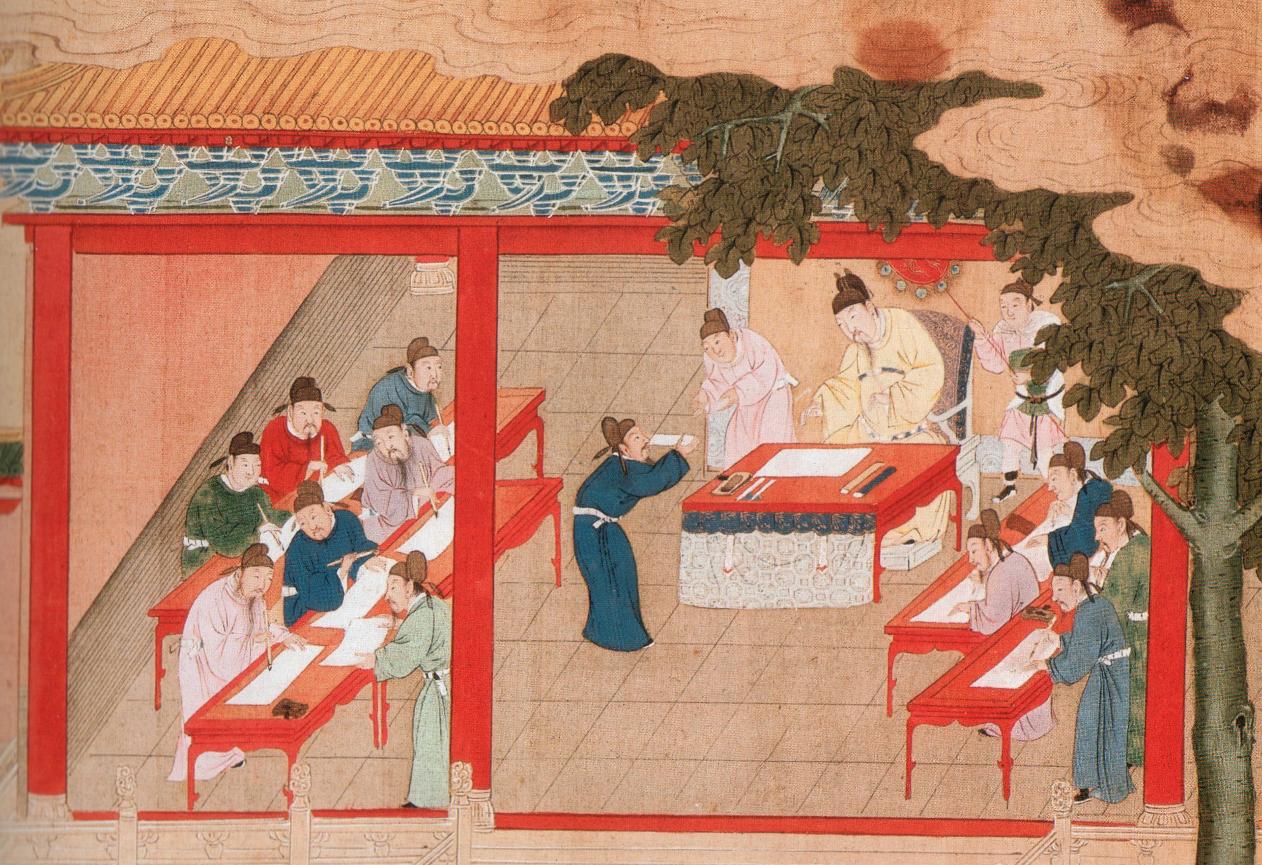
The standard of Official Selection by familial history gradually developed to emphasize talent instead. This method would eventually progress to form the standard of public examinations, to which this mechanism of cultivating talent would be institutionalized, making examinations a notoriously rigorous process to accomplish.
Imperial supervision systems

Qin dynasty
The central government set up the imperial historian, whereas the local government set up the imperial supervisor.
Western Han dynasty
Emperor Wudi of the
Han dynasty set 13 prefectures as the supervision area, and set the provincial history department for supervision.
Eastern Han dynasty
The supervision power of the provincial governor was further strengthened, and the local administrative power and military power were gradually increased. At the end of the Eastern Han dynasty, the provincial governor evolved into the local highest military and political officer.

Northern Song dynasty
There was a general court to supervise the prefectures, which could report directly to the emperor.
Ming dynasty
The local government set up the department of criminal investigation to administer local supervision and justice. In addition, the factory also set up a spying agency to monitor officials and civilians at all levels.
Political systems created by local factions
Uniform land system, rent modulation, government military system, Fan-Han divide and rule system, fierce peace and restraint, provincial system, and the eight flag system are critical systems created by local factions of noteworthy historical mention.
Other critical political systems in ancient China
Eclectical system
During the closing era of archaic society, the selective appointment of affiliated alliance leaders was conducted within the circle of noble families. This was not only reflective of antiquating public participation in politics, but also a sign of archaic society's vestiges.
Hereditary system
A hereditary system with its distinctive privatization embodied the significant progress of society.
Patriarchal systems
Since the
Western Zhou
The Western Zhou ( zh, c=, p=Xīzhōu; c. 1045 BC – 771 BC) was a royal dynasty of China and the first half of the Zhou dynasty. It began when King Wu of Zhou overthrew the Shang dynasty at the Battle of Muye and ended when the Quanrong n ...
dynasty, the patriarchal clan system was a system in which the inheritance relationship and the title were determined by blood relationship and marital status. The patriarchal clan system and privilege system formed by the patriarchal system had a far-reaching influence on later generations.
Gentry system
The gentry was developed from influential landlords and belonged to the most prestigious stratum of the landlord class. The gentry system was formed during the
Wei
Wei or WEI may refer to:
States
* Wey (state) (衛, 1040–209 BC), Wei in pinyin, but spelled Wey to distinguish from the bigger Wei of the Warring States
* Wei (state) (魏, 403–225 BC), one of the seven major states of the Warring States per ...
and
Jin dynastic era. This system selected officials in accordance to the level of their familial backgrounds, though it was often notably plagued by
corruption
Corruption is a form of dishonesty or a criminal offense which is undertaken by a person or an organization which is entrusted in a position of authority, in order to acquire illicit benefits or abuse power for one's personal gain. Corruption m ...
.
References
See also
*
History of China
The earliest known written records of the history of China date from as early as 1250 BC, from the Shang dynasty (c. 1600–1046 BC), during the reign of king Wu Ding. Ancient historical texts such as the ''Book of Documents'' (early chapter ...
{{Navboxes, title=Articles on specific dynasties, list1={{Qin dynasty topics{{Han dynasty topics{{Three Kingdoms{{Jin dynasty (265–420) topics{{16 Kingdoms{{NS Dynasties{{Sui dynasty topics{{Tang dynasty topics{{5d10k{{Liao dynasty topics{{Song dynasty topics{{Western Xia topics{{Jin dynasty (1115–1234) topics{{Yuan dynasty topics{{Ming dynasty topics{{Qing dynasty topics
History of China

 In resolute action to settle domestic concerns,
In resolute action to settle domestic concerns, 


 Qin established the system of three lords and nine ministers in the central government. Emperor Wu of the
Qin established the system of three lords and nine ministers in the central government. Emperor Wu of the 

 The eight banners system was in the late Ming dynasty when Nuzhen rulers
The eight banners system was in the late Ming dynasty when Nuzhen rulers  The standard of Official Selection by familial history gradually developed to emphasize talent instead. This method would eventually progress to form the standard of public examinations, to which this mechanism of cultivating talent would be institutionalized, making examinations a notoriously rigorous process to accomplish.
The standard of Official Selection by familial history gradually developed to emphasize talent instead. This method would eventually progress to form the standard of public examinations, to which this mechanism of cultivating talent would be institutionalized, making examinations a notoriously rigorous process to accomplish.

